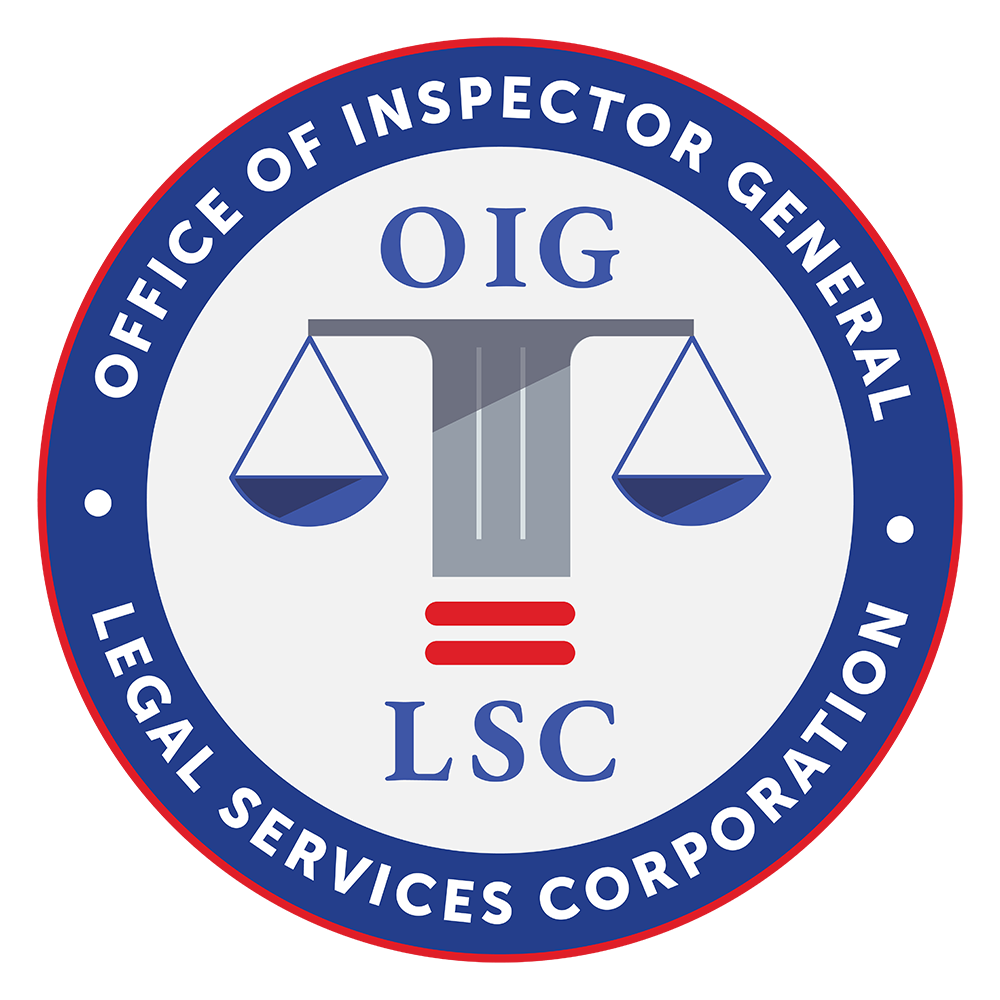In light of recent bank failures, the Legal Services Corporation (LSC) Office of Inspector General (OIG) is providing this article, outlining steps to be taken should your grantee funds on deposit exceed the Federal Deposit Insurance Corporation's (FDIC's) $250,000 deposit insurance limit.
Background
Based on multiple news outlets, Silicon Valley Bank (SVB), the 16th-largest U.S. bank with
$210 billion in assets, was closed by California regulators on Friday, March 10, 2023, after depositors rushed to withdraw funds over concerns the bank might become insolvent. It is the second largest bank failure in U.S. history. The closing of SVB raised concerns of customers at other banks, particularly clients with deposits exceeding the FDIC's $250,000 deposit insurance limit. In response to concerns about possible runs at other financial institutions, New York state regulators closed Signature Bank on Sunday, March 12, 2023, making it the third- biggest failure in U.S. banking history.
The FDIC was named receiver for SVB and issued a press release regarding the closure of SVB. The FDIC press release stated that "[t]he FDIC will pay uninsured depositors an advance dividend within the next week. Uninsured depositors will receive a receivership certificate for the remaining amount of their uninsured funds. As the FDIC sells the assets of Silicon Valley Bank, future dividend payments may be made to uninsured depositors."
Uninsured deposits include deposits in excess of the standard deposit insurance amount of
$250,000 (for deposit accounts that otherwise are covered by deposit insurance), as well as other deposits and account types that are not insured. Average disposition times according to the FDIC are six to twelve months but can be longer depending on factors including litigation and enforcement matters.
LSC Guidelines
LSC takes the safety of the investment of LSC funds by grantees very seriously. This is evidenced by the Investments Section of the LSC Financial Guide which became effective January 1, 2023, and states the following:
3.2.3 Investments:
Absent a resolution by its Board of Directors, recipients are required to manage LSC funds as follows:
- LSC funds held for operating expenses must be maintained in federally insured bank accounts.
- LSC funds in excess of the Federal Deposit Insurance Company limits and not needed for immediate operating expenses must be invested with another financial institution in federally insured accounts or certificates or invested in
U.S. Treasury notes or bills or investment instruments, for example, money market accounts and repurchase agreements that invest in U.S. government securities.
If a recipient's Board of Directors adopts policies outside of these requirements, the Board of Directors is required to acknowledge, by resolution, the divergence from LSC's authorized policy and the acceptance of full responsibility for the security of any investments made outside of LSC's requirements. In cases of losses of LSC funds related to investment decisions made outside of LSC's requirements, for purposes of personal liability, the Board of Directors will be held to the standard of care imposed by applicable state or federal law.
OIG Observations and Recommendations
The LSC OIG shares LSC's concern for the safety of LSC funds invested by LSC grantees. In conducting Fraud Vulnerability Assessments (FVAs) at LSC grantees, the OIG reminds grantee management of the requirements of LSC guidelines and the potential risks of exceeding the FDIC insurance limits in their program bank accounts. During the OIG reviews done as part of the FVAs, the OIG finds it is not uncommon for grantee bank accounts in FDIC insured institutions to exceed the $250,000 insurance limit.
When grantee bank account balances exceed the $250,000 FDIC insurance limit, the OIG suggests that the grantee take steps to have account balances remain under the insurance limit. If that is not practical or acceptable to grantee management, the OIG suggests that steps be taken to comply with the LSC Financial Guide requirements. Those steps include the Board of Directors acknowledging, by resolution, the divergence from LSC's authorized policy and the acceptance of full responsibility for the security of any investments made outside of LSC's requirements.
The OIG may also suggest that grantees consider consulting their banks regarding the possibility of establishing a sweep account. Many commercial banks provide their customers the ability to participate in sweep programs that enable the customer to have excess cash in its main deposit accounts (e.g., checking accounts) "swept" to other accounts. Many of the bank customers that participate in sweep accounts use the sweep function to purchase shares in money market mutual funds and other similar investment securities that will provide the customer with higher interest than keeping funds in a bank checking account. However, the nature of sweep programs and the "investment mechanisms" used by customers can vary greatly.
For example, customers can establish a target balance amount for their applicable deposit account and sweep cash in and out of the deposit account to maintain that target balance. In the case of LSC grantees, the target balance being the $250,000 FDIC insurance limit. LSC grantees would then work with their bank to ensure that their funds are swept to other FDIC insured banks until the need for those funds arises, requiring that the funds be swept back into their main account. The bank can also be instructed to use the swept funds to invest in instruments that comply with the LSC requirements such as U.S. Treasury notes or bills or investment instruments.
We hope you find this information helpful in your efforts to safeguard LSC (and non-LSC) funds.
If you have any questions or would like additional information about this Fraud Corner, please contact Daniel O'Rourke, Assistant Inspector General for Investigations, LSC OIG, at
(202) 295-1651, or by email at dorourke@oig.lsc.gov.
If you would like to stay current with our most recent alerts and advisories, please follow the directions on our homepage, "Sign Up for Email Updates" to subscribe to the LSC OIG website.
